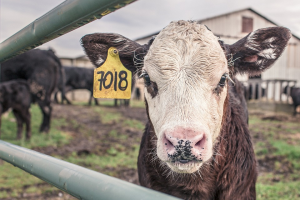What really goes on behind barn doors?
Have you ever been to an island, and noticed anything about the price of food?
Have you ever wondered how they get their animals, goods and services to an island?
Is it by boat? By plane?
What about the cost of this transport?
Do they get rebates for having to live on an island or is that just the cost they have to pay?
(Hint: continue reading to find out)
(“ A cow behind barn doors of a factory farm” n.d.)
Background info of our project and LFS 350 term
We are sad to say that our adventure over four legs on a ferry has come to an end. Through our fun adventures of meeting each other, spending a weekend on Galiano island, and working towards a conclusion on how to support island livestock farmers, we have learned a lot and we hope you have too.
Working on this Galiano island project together we have learned about the realistic and daily challenges farmers may face. We have had the chance to look at those problems on a deeper level. We also learned how groups can work towards addressing complex issues more adequately and productively than individuals: such that our diverse backgrounds and knowledge contribute equally and add an element of excitement to our team work. We have worked as a team at times of disagreement, shared our ideas and what we know, debated situations and results, and finally we found our way to the end.

(“ A goose taking charge” 2011)
Have you heard the podcast “this american life: poetry slam 2011”? (Liver, 2011)
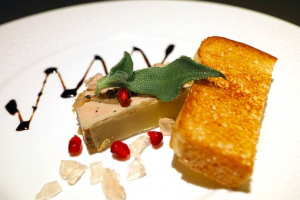 (“ French Cuisine, foie gras. A decadent meal of goose liver” n.d.)
(“ French Cuisine, foie gras. A decadent meal of goose liver” n.d.) 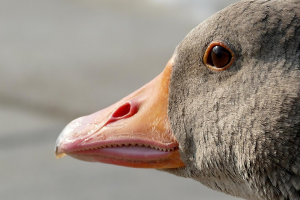
(“ A goose head” n.d.)
The podcast discussed this idea of foie gras which holds near and dear to our group’s hearts. The idea behind this podcast is to essentially find a way to develop this specific, magnificent flavor of fatty liver, in a natural, sustainable way. Spoiler alert: they find out how to do so…
Originally, the special guest on the podcast discussed how he used to believe it was impossible to make foie gras without force feeding geese, in order to expand their livers to enormous sizes, full of fat. Then, he met someone who showed him elements of animal welfare that are possible to adopt in these practices, and that if you treat your geese with respect, they will continue to eat endlessly, allowing you to have that fatty liver, yet in a humane way.
The problem with this, is that the geese that were “treated well” were left in the cold, which was supposed to resemble natural resources and a natural environment, which was supposedly required in order for them to eat endlessly. The author ends by questioning whether force feeding geese is less humane than leaving them out in the cold, where over 30% were being killed by predators. What do you think?
This goes to show that nothing is black and white. Even when we think we have a perfect idea of how to solve animal welfare issues, it turns out there are always more considerations.

(“ A ferry ship” n.d.)
This relates to our livestock transportation and BC ferries proposal as we initially came into this project thinking we were here to fight for animal welfare. To our surprise, we realized that like many other parts of life, animal welfare is not black and white. We have learned something important regarding animal welfare and farmers. Activists mostly tend to take a one-sided view and what they present is not an accurate portrayal of the reality of the situation. Farmers want good animal welfare systems because it is in their economic interest and because they of course have respects for thei animals. Many farmers practice sustainable farming activities. One of the farmers we talked to moved from Alberta to Galiano Island 28 years ago just to establish a sustainable farming system. Similarly to animal welfare, LFS 350 was even further from being black or white
If you are new to our blogs, LFS 350 is a land and food system class at UBC that looks at everything from food sovereignty (International Panel of Experts on Sustainable Food Systems, 2015) to food sustainability (Phillips, 2014) and even about diversity (McCullum, Desjardins, Kraak, Ladipo, & Costello, 2005). It is supposed to teach us about “the real world” outside classroom doors and into our communities.
For this reason, we feel very fortunate to have ended up with the great opportunity to visit the beautiful gulf island, Galiano. We met with Jane Wolverton, the “Galiano Club Community Food Program” president who has supported us on our journey.
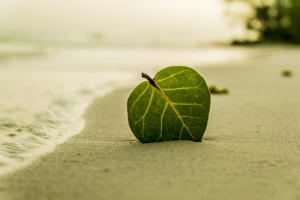
(“ A green leaf, alone on a stranded island ” n.d.)
Throughout the past few weeks, a lot has changed. We have grown as a group and learned how to combine our values and beliefs to complete a successful team project and community development. Many problems and challenges arose, but each time we found a unique way to achieve our goals.
What?
For any project, it is important to set the stage for unpredictable situations. Therefore, having open communications among group members, interviewers and the project coordinator was an absolute necessity.Initially, when beginning the project, we focused on our “project objective” which was referring to livestock transportation policies of BC Ferries. Yet, as research began to take off, we realized BC Ferries wasn’t the main problem for island farming. The only farmer we talked to in person did not see BC Ferries a big hassle in terms of transportation of his livestock. He has other concerns when it comes to relying on ferry transportation for farming purposes. So, maybe you can imagine a little bit of the frustration we felt, coming into the project with all these ideas and dreams of how we would help, but quickly realizing the problem was bigger than we could imagine.
So What?
As was discussed (check out our previous blogs), we had just one day on the Island, unexpectedly. Therefore it was important that we continued to research when we got back home, and reach out to Jane (our community partner) to contact the farmers we weren’t able to meet. When we figured out that farmers on Galiano Island were more concerned about other issues rather than livestock transportation, we had a moment of confusion. Diagnosing an issue in term of the procedure in middle of a group project is a real task itself. Ultimately, we had two major issues to tackle, both of which were completely unexpected. One was the real issue farmers are dealing with (regulations regarding transport, and potentially a shared abattoir to decrease cost of transport and decrease time spent on ferries) and the second one was are we going to approach it.
Now What?
It is essential to recognize signs and take necessary actions. The ultimate goal of all these LFS 350 projects is to learn from experience as an individual, get out in the community to learn from community partners and share data, resources and information. Definitely, we saw some challenges and strengths in our community project. A big challenge was when we had a moment, where it seemed so clear that we needed to switch our thoughts on what the farmers needed. It was important for us to take a step back and ask what they needed, instead of focusing on what we thought was best (Mathie & Cunningham, 2010). So, we started to communicate more with other farmers and with our project coordinator to find a way to turn the project around. We tried to focus on issues farmers mentioned at the same time we were addressing the BC ferries policies regarding those problems. Overall, as a group members we tried to be optimistic and creative problem solvers to find a way to make the project work
From now, we will finish writing our paper about all the research we have gathered over the term, and leave a good platform for the next year to step up and help Galiano farmers!
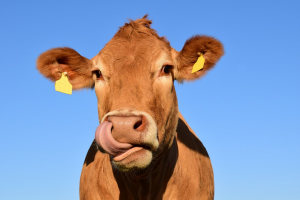
(“ A cow head” n.d.)
Ultimately, as you may see our project has taken some twists and turns. We thoughts we were going into it for animal welfare or transportation regulations but realized that island farming is complex and there are big challenges that need to be faced before being able to solve all small problems. We found that having an asset based community development (Mathie & Cunningham, 2010) plan was the best way to work on Galiano, taking what was already available and expanding.
We also have learnt a lot about how educated and passionate farmers are regarding sustainability and local farming regardless of the challenges they deal with everyday. Analyzing all the information we collected after interviewing the farmers, and further research from online papers, we came up with the conclusion that the Galiano Island farmers’ main problem is ‘’access’’ and BC ferries’ regulations is only ONE part of it. Well, maybe it is not a big surprise as they live on an Island and Islands are in many ways less accessible than mainland. However, there is always room for improvement in terms of providing services or modifying regulations that influence the provided services. As a consumer, we may not see what really goes on behind our food, so it’s important to stay informed and up to date.
We hope you’ve enjoyed these high waves as much as we did!

(“ Pacific ocean” n.d.)
We hope you have learned a lot about our journey, food, animal welfare and life on an island. We encourage you in the future years to continue following this project with LFS 350 and the upcoming groups that build on our research and work on expanding this project, will continue to learn. Good luck, Galiano!
(“ Four legs on Ferries presenting our research” 04.03.2017)
Until next time…
#fourlegsonferries
References:
International Panel of Experts on Sustainable Food Systems. (2015). iPES Food: The new science of sustainable food systems.
Mathie, A., & Cunningham, G. (2010). From clients to citizens: Asset Based community development as a strategy for community driven development. Taylor & Francis online, 474-486.
McCullum, C., Desjardins, E., Kraak, V., Ladipo, P., & Costello, H. (2005). Evidence Based Strategies to build community food security. Journal of the American Dietetic Association, 278-283.
Phillips, K. (2014). How diversity makes us smarter. Scientific American.
Picture References:
[Untitled illustration of a cow ]. Retrieved March 28, 2017 https://pixabay.com/en/calf-cow-maverick-farm-animal-farm-362170/
[Untitled illustration of a goose head ]. Retrieved March 28, 2017
https://pixabay.com/en/goose-geese-head-animal-nature-1556424/
[Untitled illustration of a plate of food ]. Retrieved March 28, 2017
https://pixabay.com/en/restaurant-cuisine-food-french-1819024/
[Untitled illustration of a ship ]. Retrieved March 28, 2017
[Untitled illustration of a goose head ]. Retrieved March 28, 2017
https://pixabay.com/en/goose-geese-head-animal-nature-1556424/
[Untitled illustration of a leaf ]. Retrieved March 28, 2017
https://pixabay.com/en/beach-leaf-green-nature-summer-394503/
[Untitled illustration of a cow ]. Retrieved March 28, 2017
[Untitled illustration of a leaf ]. Retrieved March 28, 2017
https://pixabay.com/en/beach-leaf-green-nature-summer-394503/
[Untitled illustration of an ocean wave ]. Retrieved March 28, 2017
https://pixabay.com/en/wave-atlantic-pacific-ocean-huge-1913559/
